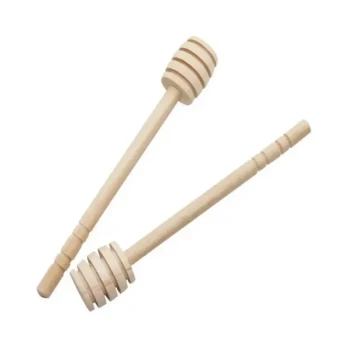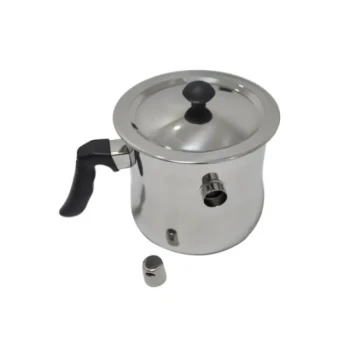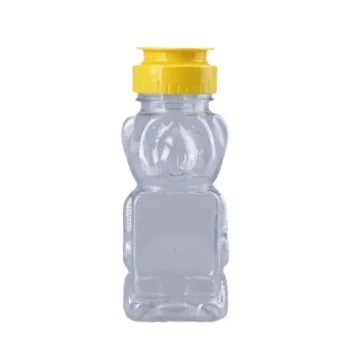Yes, heating honey makes it significantly thinner. When you apply gentle heat, the viscosity of the honey decreases, transforming it from a thick, slow-moving liquid into a much more fluid, pourable state. This process is also effective for dissolving the sugar crystals that form in honey over time, restoring its smooth texture.
The core issue isn't just about making honey thinner, but about how to do so effectively without destroying its delicate flavors and beneficial compounds. The key is applying gentle, indirect heat to restore liquidity while preserving quality.
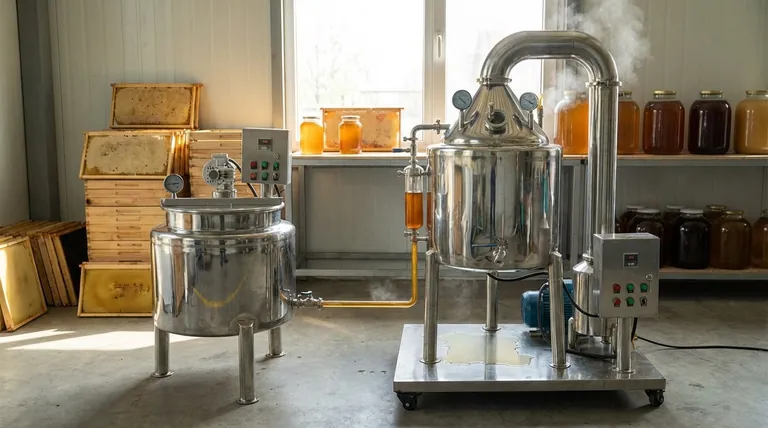
The Science of Thinning Honey
Honey's thickness, or viscosity, is determined by its low water content and high concentration of sugars. Applying heat changes this physical property directly.
Viscosity and Temperature
Viscosity is a fluid's resistance to flow. Think of it as internal friction. When honey is cold, its sugar molecules are packed tightly and move slowly, resulting in high viscosity (thickness).
Applying heat introduces energy, causing these molecules to move faster and further apart. This reduces the internal friction, lowering the viscosity and making the honey flow more easily.
Reversing Crystallization
Crystallization is a natural process, not a sign of spoilage. It occurs when glucose, one of the main sugars in honey, separates from the water and forms tiny crystals.
Gently heating the honey provides enough energy to dissolve these glucose crystals, redissolving them back into the solution and returning the honey to its original smooth, liquid state.
Understanding the Trade-offs: The Risks of Overheating
While heat is a useful tool, excessive or rapid heating can permanently damage the honey. This is the most common mistake people make.
Degradation of Beneficial Compounds
Raw and minimally processed honey contains beneficial enzymes and antioxidants. These compounds are sensitive to heat.
Temperatures above 110°F (43°C) can begin to break down these valuable components, diminishing the unique nutritional properties of the honey.
Altering Flavor and Color
Overheating doesn't just damage nutrients; it also changes the honey's sensory profile. It can caramelize the sugars, which darkens the honey's color and can introduce a burnt or bitter taste.
This process irreversibly alters the delicate and complex flavor notes that are unique to the honey's floral source.
The Danger of Microwaving
Never use a microwave to heat honey. Microwaves heat unevenly and extremely quickly, creating hot spots that will scorch the honey almost instantly.
This method guarantees the destruction of beneficial enzymes and delicate flavors, fundamentally ruining the quality of the product.
How to Apply This to Your Project
The goal is to warm the honey, not cook it. The safest and most effective technique is the warm water bath method.
Step 1: Prepare the Water Bath
Place your glass jar of honey into a pot or bowl. Fill the pot with warm water, ensuring the water level comes up the side of the jar but does not risk getting into it.
Step 2: Gentle Warming
The water should be warm to the touch, but not boiling. Around 100-110°F (38-43°C) is ideal. Let the jar sit in the warm water.
Step 3: Stir and Wait
After 15-20 minutes, gently stir the honey. You will notice it has become much more fluid. If crystals persist, replace the water if it has cooled and let the jar sit longer until the honey is smooth and clear.
- If your primary focus is making thick honey pourable: A quick, 15-minute warm water bath is all you need to achieve a perfect consistency for drizzling.
- If your primary focus is dissolving heavy crystallization: Be patient and allow the jar to sit in the warm water for a longer period, stirring every 20-30 minutes until all crystals have dissolved.
- If your primary focus is preserving maximum nutritional value: Use the lowest effective temperature (barely warm to the touch) and only heat the honey for the minimum time required to reach your desired texture.
By understanding the relationship between heat and honey, you can easily control its texture without compromising its quality.
Summary Table:
| Goal | Recommended Method | Key Temperature Guide |
|---|---|---|
| Make honey pourable | Warm water bath | 100-110°F (38-43°C) |
| Dissolve crystallization | Gentle, prolonged warming | Below 110°F (43°C) |
| Preserve nutritional value | Lowest effective temperature | Barely warm to the touch |
Need to process large quantities of honey efficiently while preserving quality?
As a commercial beekeeper or distributor, managing honey's viscosity and crystallization is crucial for your operations. At HONESTBEE, we supply the durable, high-capacity equipment you need—from warming cabinets to honey gates—to handle honey gently and at scale.
Let our wholesale-focused team provide the right solutions for your apiary. Contact our experts today to discuss your specific needs and ensure your honey maintains its premium quality from hive to market.
Visual Guide
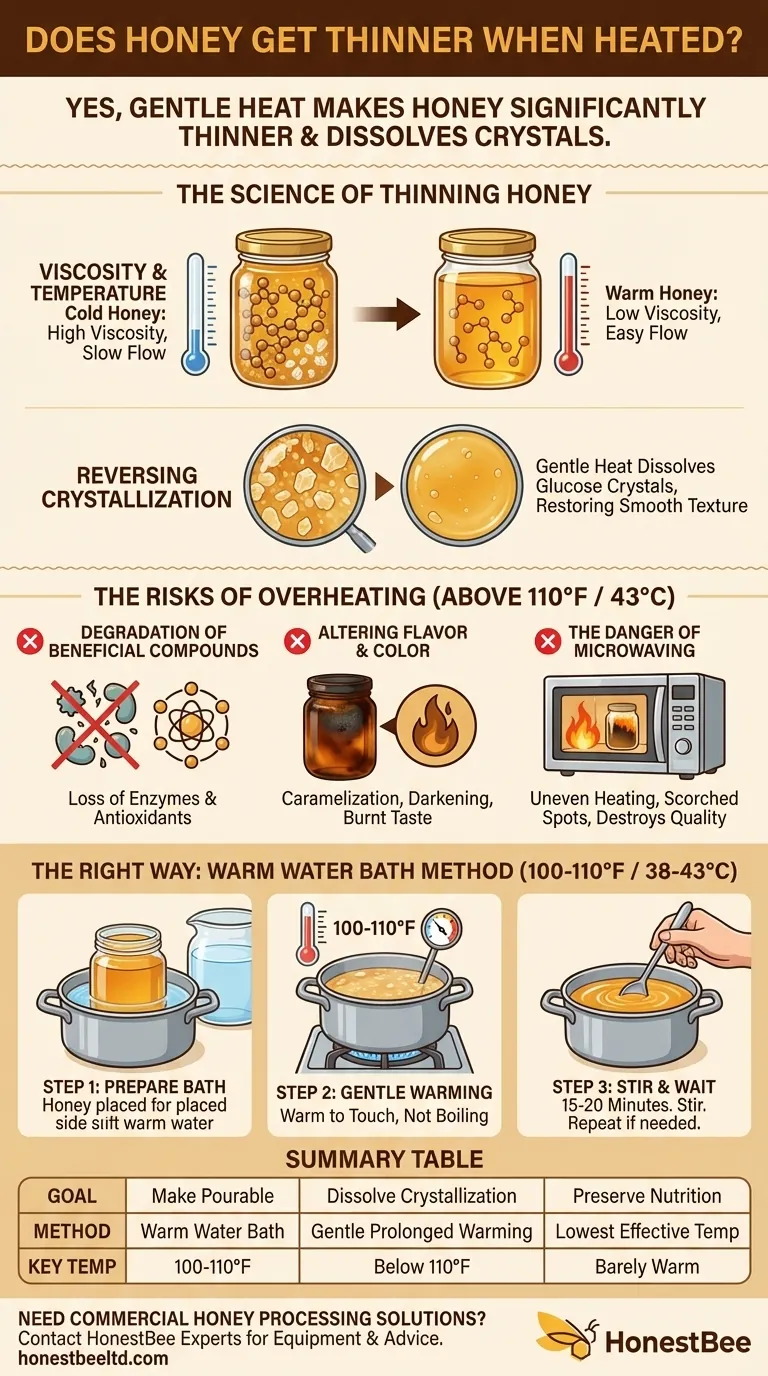
Related Products
- Honey Concentrating and Filtering Dehumidifier Machine 2T Capacity for Honey
- High Quality Honey Dehumidifier Dryer Thickening Machine for Beekeeping
- 10L Stainless Steel Electric Honey Press Machine
- Electric Honey Press Machine for Squeezing Honey Comb Press Equipment
- HONESTBEE 72 Frame Industrial Electric Honey Extractor for Beekeeping
People Also Ask
- What are the benefits of a honey heating tank? Achieve Crystal-Clear, Market-Ready Honey
- What is the purpose of a honey dryer? Maximize Your Honey Yield and Quality
- How to decrease moisture in honey? Prevent Fermentation and Ensure Long-Term Quality
- What are the benefits of using a honey dryer for honey production? Boost Yield & Quality
- How can the moisture content of honey be reduced? A Guide to Safe, Effective Drying Methods








